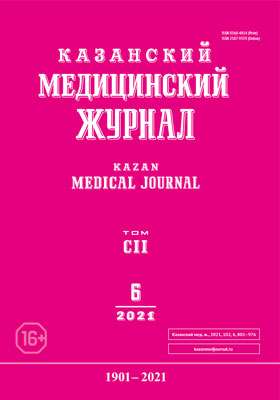Professor Charles H.V.Hoyle
- Issue: Vol 102, No 6 (2021)
- Pages: 969-971
- Section: Obituary
- Submitted: 06.12.2021
- Accepted: 06.12.2021
- Published: 13.12.2021
- URL: https://kazanmedjournal.ru/kazanmedj/article/view/89784
- DOI: https://doi.org/10.17816/kazmj89784
- ID: 89784
Cite item
Full Text
Abstract
Dr. Charles H.V. Hoyle was a world-renowned neurophysiologist, neuropharmacologist, neuroanatomist. He received his bachelor’s degree from Queen Elizabeth College in London in 1982, and already in 1986 he defended his PhD thesis at King's College London (University College London) under the supervision of Professor Geoffrey Burnstock — the founder of the theory and a recognised leader in purine research.
Full Text
Sad news came from Great Britain — at the age of 66, the Deputy Editor-in-Chief of Kazan Medical Journal, Doctor of Science, Professor Dr. Charles H.V. Hoyle, died from complications associated with the COVID-19 coronavirus infection.
Dr. Charles H.V. Hoyle was a world-renowned neurophysiologist, neuropharmacologist, neuroanatomist. He received his bachelor’s degree from Queen Elizabeth College in London in 1982, and already in 1986 he defended his PhD thesis at King's College London (University College London) under the supervision of Professor Geoffrey Burnstock — the founder of the theory and a recognised leader in purine research.
Dr. Charles H.V. Hoyle’s research was dedicated to investigating pharmacological properties of purines in invertebrates. The results of his research conducted in numerous organs from various species allowed him to formulate an important conclusion about the presence of purine receptors in the most primitive animals, and from an evolutionary point of view, to support the hypothesis that ATP is one of the earliest extracellular signalling molecules in the evolution of living organisms.
Dr. Hoyle’s subsequent work dealt with adenine dinucleotides and their role in physiological and pathological signalling systems, either alone or in combination with other signalling molecules. His research was aimed at identifying the effects of ATP and dinucleotides as neurotransmitters released by peripheral or central nerves, establishing the type of receptors they act on, the pharmacological profile of these receptors, and enzymatic degradation of dinucleotides. Dr. Hoyle published the results of his research in 3 monographs and 12 book chapters, he is the author of more than 100 articles in the world’s leading journals, his Hirsch index (Scopus) is 35.
I want to add to these dry facts of his biography my personal memories of Charles. I met him in London, in the laboratory of Professor Burnstock in 1992 at the start of my first foreign research trip. At first, he treated me rather coolly, but very quickly, in joint scientific and near-scientific conversations, we developed great mutual sympathy. He was a bit older and much more experienced in research, particularly in matters of scientific networking and publications. My English at the time was far from perfect and he supported me in learning the language, helped me overcome my shyness when speaking, and helped avoid unintentional errors in writing my first manuscripts. Charles himself was interested in the Russian language, he always tried to insert into our conversations a few Russian words and phrases he had learned.
A visit to his parents in Liverpool became the decisive event for cementing our life-long friendship. I, like all my peers at the time, was a fan of the Beatles, and when I found out that Charles was from Liverpool and his parents lived there, I asked him to somehow arrange a trip for me to the homeland of the Beatles. Much to my surprise, he himself was not a particular fan of Beatles, but he liked my interest in his hometown. In Liverpool, we visited with him every single place related to the Beatles — the Cavern Club, Penny Lane, Strawberry Fields and much more. It was a fantastic trip, but from that trip I often remember something else — a story about cheeses and mushrooms that happened in the home of Charles’ parents.
On the first evening, after a delicious dinner, Charles’s mother served a plate of various types of cheese. Charles’s father asked me what kind of cheese I prefer eating after a meal, to which I honestly replied that I have no preferences, since in my country (this was 1992) we usually had only two options on the table — whether there was cheese or there was none. Charles’s father smiled quietly and said nothing. My hour came the next day, when they treated me to mushroom soup, and I asked what kind of mushrooms this soup was made from. Charles’s father replied in surprise that mushrooms were mushrooms, there were no different varieties. No, said I, in Russia we know at least 10–15 species of edible mushrooms and can tell them apart. He thought for a moment, then laughed and said: one-one, it's a draw!
Since then, Charles became a great friend of our family, we repeatedly visited with him, he joined us for school performances of our son in London, but, unfortunately, we did not succeed in getting him to travel to Russia, to our dacha, which he knew a lot about from our stories and videos. We thought that everything will happen later, we will have time, better times will come ... Better times did not come, and the COVID-19 pandemic has completely ruined life. Till his very last days, Charles supported me in everything regarding “Kazan Medical Journal”, and Cochrane Russia. I and my family will always be grateful to him for this.
These days are very bitter, painful and sad for me personally and my family. The scientific and academic establishments lost a gifted scientist, and I have lost my very close faithful friend, a rare, unique gentleman in the most classical understanding of this word, which the modern society is losing increasingly…
Ayrat U. Ziganshin
References
Supplementary files






